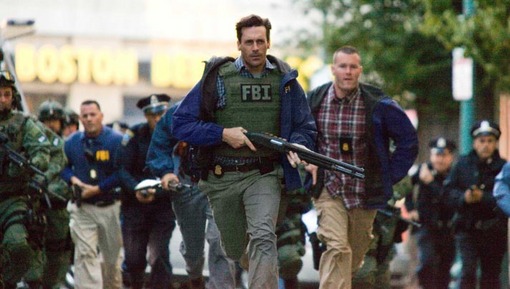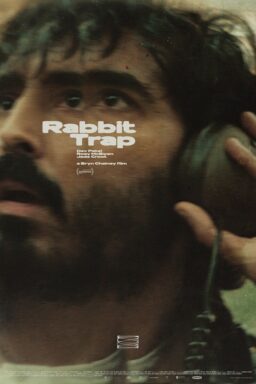In his appreciative review of Ben Affleck’s “The Town” this week, Roger Ebert perfectly describes the feeling of disengagement I often notice in modern action sequences: “… I persist in finding chases and gun battles curiously boring. I realize the characters have stopped making the decisions, and the stunt and effects artists have taken over.”
That is precisely the way I feel about those sections of obligatory, unfocused movement in most movies. They’re almost like little intermissions shot by the B-team to give you a snack and potty break (“Let’s all go to th lobby…”). We know nothing consequence is going to happen. The movie has entered cruise control and for the next few minutes we’ll be watching one near-miss/narrow escape after another.
But this wasn’t (and isn’t) always so. David Bordwell looks to Hong Kong, and compares James Bond and Jackie Chan (by way of Sly Stallone), to show us how it’s done.
Stallone told American Cinematographer Magazine that he wanted to put his cameras into the middle of his action scenes so they would feel as chaotic as they would to the participants:
“I thought, ‘This is not supposed to hang in the Louvre.’ I wanted it to be disjointed and rough, not choreographed. If you really were filming a big battle with five cameras, [their footage] would not all flow together, so we set up the [cameras] to film the action we’d scripted and told the operators they were on their own. We said, ‘Do the best you can, and we’ll use the interesting shots from the characters’ perspectives.'”
Of this “multi-camera craziness,” operator Vern Nobles says: “Sly likes bumps on zooms and is stylized about camera movement. There really is no A or B or C camera in that sense. Everybody’s running an A camera, for the most part.”
Or everybody’s running around with a C camera. Depends on how you look at it. DB points out that just about any any approach can be justified in the name of “realism” — whether objective or subjective. Either you show what’s happening, or you immerse your audience in the chaos of the moment. So, perhaps directors who invoke “realism” are not looking closely at the real challenge:
Forget the realist alibi. What do you want your sequence to do to the viewer? Do you want it to pass along an impression of bustle and flurry? Or do you want to make the viewer wince, recoil, even mildly reenact the movements of the players? Then follow the Hong Kong tradition. Yuen Woo-ping once told me that his goal was to make the viewer “feel the blow.” To convey the effort and strain, the impact and pain: that’s something worth doing.
It’s something that the blur-o-vision tussles lack, but even fights that are more carefully filmed are strangely unmoving….
DB compares a catwalk fight from the Roger Spottiswoode-directed Bond film “Tomorrow Never Dies” (1997) with a shopping mall brawl from Jackie Chan’s “Police Story” (1985) — with lots of frame grabs (and even some frame counts) to illustrate both. And he offers four sensible Hong Kong rules for shooting action so that the audience can sense what’s going on and feel physically and emotionally involved in the scene:
First, go for clarity in every way [compositions, lighting, colors, camera moves]…. Put the camera on a tripod; pan if you must, but save your dolly moves for simple emphasis. No handheld.
Second, aim for precision. Stallone’s comments imply that a cameraman captures a preexisting fight, snatching an “interesting” shot here or there. But that’s not the case. Movie action is choreographed and the framing is calibrated to that. The gestures should be legible, favoring crisp and staccato movement, while the image’s composition aims to convey the action cleanly….
Third, establish a rhythm. This involves not only building the fight. It also involves synchronizing the pace of characters’ movements with that of the cutting. On the whole, the old rule applies: More distant shots should be held longer than closer ones. This doesn’t mean you can’t use fast cutting, only that your fast cutting can be more finely judged when you take shot scale, composition, and speed of movement into account. […]
Fourth — and here is where realism is most explicitly abandoned — amplify the expressive qualities of the action. If movement is zigzag or springy or oscillating, stress that. Give emotional qualities not only to facial expressions but also to postures and combat moves. American heroes just grimace while their bodies remain inexpressive, lumpish…. Just concentrate energy and emotion in the action. If the hero attacks, let him become as focused as a javelin. If your heroine falls, don’t let her just drop out of frame: Let her land with a thwack, preferably on the spine or neck, and let her body’s recoil send a spasm through the spectator too.
You’ll recall certain fight scenes or chases in which you found yourself involuntarily flinching, parrying, ducking, leaning with the momentum of the action, or gasping as if you’d just been smacked with a heavy object. Those are the good ones. When you see any or all of the four principles above at work, you’ll recognize how the scene is working you over….
– – – –
David Bordwell: “Bond vs. Chan: Jackie shows how it’s done“
Scanners: “Mad Men: How to direct an action sequence











